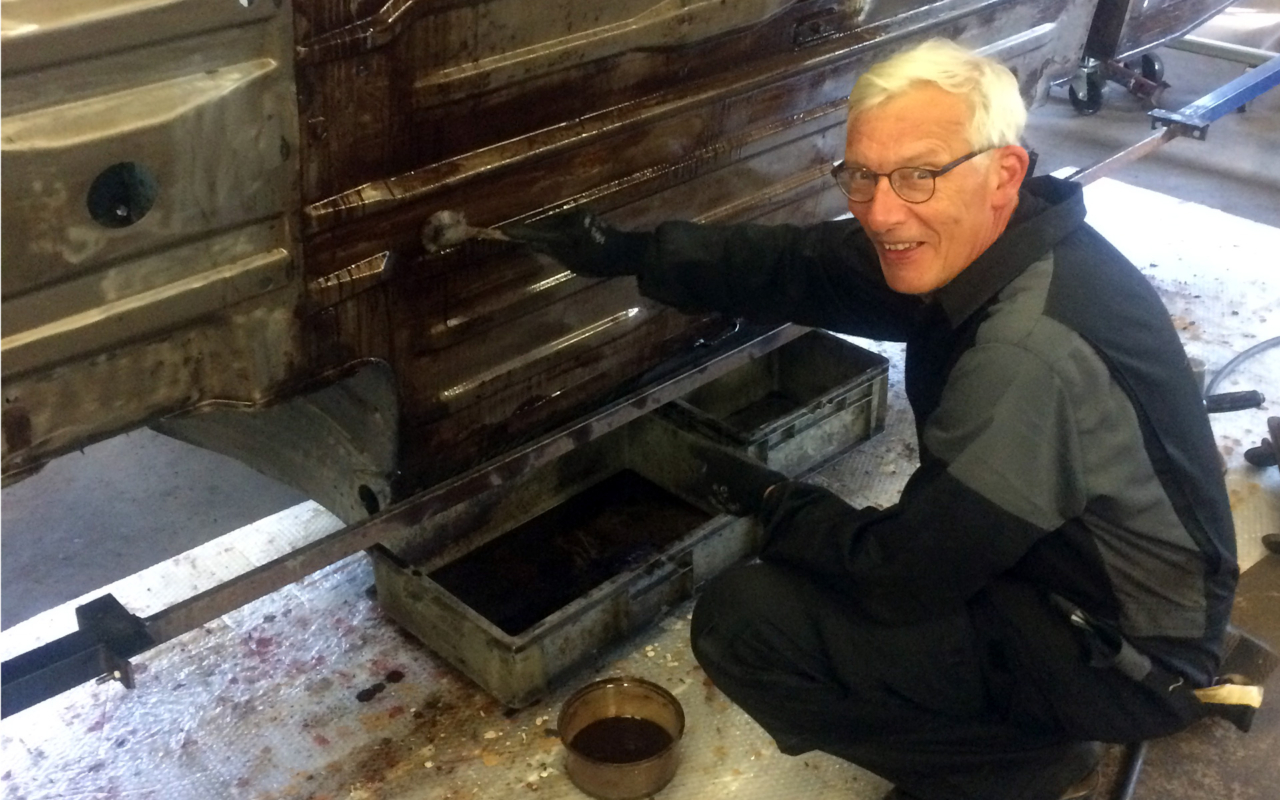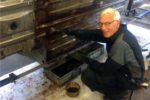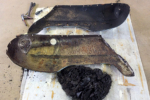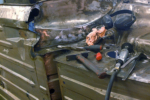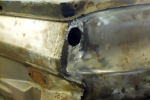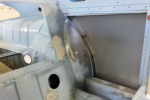October 2018 – Restoration starts
To get started with the restoration we made a body cradle out of two engine stands, some square tubing and some bits an pieces from the junk box. The body then was able to be lifted about 1 meter and we could turn it almost 90° for easy access to the bottom floor.
From pictures you can see that P 90238 had 5 bolt rims during the ice season but for the summer seasing it was equipped with 4 bolt Sport rims. Naturally the race team had access to these, since the Saab Sport was introduced in August/September 1962. We have chosen to build the replica with Sport brakes and been happy enough to get our hands on similar ones, of the very rare early kind.
The old race mechanics told us that Saab racing cars were driven with Bilstein shocks, in Sweden in the 60’s named ”Auto Trygg”. The Support Organization were given four shock absorbers from Hans Svedinger in Skåne, but three of these needed restoration. However, the well known Saab driver Anders Jensen in Borås, could provide us with working shock absorbers and is working on manufacturing original looking labels from them.
A serious restoration insists on everything bolted to be removed from the body. This made it possible for us tu split the work load between the members of the project group.
Hans Eklund (who has restored several Sonettes and built several race cars) has taken on the the front end and the conversion to Sport brakes. Jan Liedberg (with much experience from car restorations and building of rally cars) is responsible for rear axle, tropical hood, GT seat mount and the building of a air cleaner + mount for the rev counter. Nils Gunnar Svensson (engine engineer in the factory race team in the 60’s) is responsible for ”small parts” in the engine compartment. Sten Olof Göthberg (chairman of the Saab Veterans) is going to restore rims and wooden steering wheel. Björn Mohlin (who, together with his son builds Swedens fastest 2-stroke Saabs) will examine the engine.
We chose not to have the blasting done by some external firm, part not to loose momentum and to be able to do rust repair and cleaning at the same time. Lots of time has been spent removing the sometimes up to 2 cm thick layer of undercoat. Most ambitious in this part has been Åkes brother Leig. The rust protection has also given us some trouble when welding. On the other hand, the meticulous and repeted rust protection is the reason for the car having so few rust problems. Initially we scraped the undercoating away, then using a wirebrush and finally washed with de-greaser.
The car is still at Zackrissons workshop and Åke has spent a tremendous amount of time repairing rust damages in a exceptionally professional way, with joints that even for the trained eye is hard to detect, whilst they are sanded and tin filled. Tin filling is a method that in major parts has been forgotten by younger mechanics, but except a smooth surface also provides an excellent rust protection.
Now, we also met the paint officer at NEVS, Bertil Gustavsson and some of his staff. They have promised to help us with the final paint on the car. You can almost feel the stroke of time when the car is brought back to the very same place it was born 56 years ago to be reborn in a new red shape.
The glass in side and rear windows will be replaced by plexi glass to save weight. Plastmästarn in Mölndal has been kind enough to pick bits and pieces of poly carbonate for us to keep kosts down. The old GT seat from Saab-ANA Accessory catalogue is about to get a new red fabric at a saddler in Munkedal.
